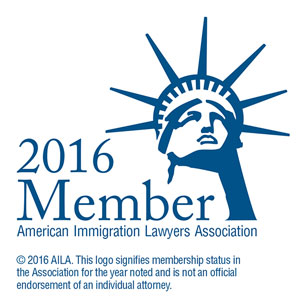Elephants, Mouseholes, and Sickness: My Comment on the Latest Anti-Asylum Proposed Rule. Do You Have One Too?
On the heels of the prior proposed rule restricting asylum and withholding of removal that I commented on and blogged about, the Department of Homeland Security and Executive Office for Immigration Review have put out yet another proposed rule to drastically restrict asylum and withholding of removal. This one would allow the expedited removal of asylum claimants who have come from countries where a “contagious or infectious disease” is “prevalent or epidemic” (which is to say, virtually everywhere), on the basis that they are a “danger to the security of the United States” and thus barred from asylum and withholding of removal. Those claimants who can establish that they would be tortured in their home countries may instead be removed to a different country.
Comments for this rule must be submitted by the end of the day (11:59 pm) on Monday, August 10. The preferred way to submit comments is through the “Federal eRulemaking Portal: http://www.regulations.gov.”, and “identified by Docket Number USCIS 2020-0013.” In particular, you can comment at https://www.regulations.gov/comment?D=USCIS-2020-0013-0001 .
As with the previous rule, whether or not you have more than 5,000 characters (the limit for the fillable form box, though you can exceed it by attaching a document) to say about this outrageous attack on asylum, I would strongly recommend that you say something. The more substantively different comments that are received (duplicates will be given little weight), the more objections DHS and EOIR will need to consider and address before promulgating a final rule.
Below is the current draft of my comment, a final version of which I will be submitting on Monday. This version does not comply with the fillable-field 5,000-character limit, so I intend to submit my comment as an attachment, which I ended up doing with a longer version of my comment last time, although while perhaps including a shorter summary in the character-restricted box.
__________________________
As a lawyer whose practice has included asylum work for more than 14 years, I write to comment on Docket Number USCIS 2020-0013, a proposed rule of both USCIS/DHS and EOIR/DOJ.
This proposed rule follows on DHS/EOIR RIN 1125-AA94 (which I will refer to as the “previous proposed rule”) as yet another effort to dramatically limit asylum in the United States, inconsistently with the structure and spirit of the Immigration and Nationality Act. It simply takes a different approach. If the previous proposed rule to limit asylum was baroque in its complexity, a sort of “kitchen-sink” approach, this proposed rule is a more precisely targeted dagger to the heart of the asylum system. The rule essentially proposes to equip the asylum system with an on/off switch—and there is little mystery about how this Administration believes the switch should be flipped. But such a major alteration of the statutory scheme requires Congressional authorization, and Congress has not authorized the installation of this particular switch.
The effect of proposed 8 CFR 208.13(c)(10)(ii) and proposed 8 CFR 208.16(d)(2)(ii) is to give the Secretary of Homeland Security, Attorney General, and Secretary of Health and Human Services the power to effectively end asylum from any country or region they wish, simply by designating one or more countries or regions as countries or regions where a dangerous disease is “prevalent or epidemic”, and asserting that the entry of asylum claimants from those countries or regions would pose a “danger to the security of the United States”. Most applicants from that country or region can then be summarily denied any protection at all. The few applicants who satisfy the impossibly high burden of affirmatively claiming a fear of torture, and then meeting the entire standard for deferral of removal during the course of an abbreviated credible fear interview, can simply be faced with removal to a third country (or, if they establish a likelihood of torture in that third country, presumably a fourth country). Some may then withdraw their claims, rather than be sent to a country about which they may know nothing and where they might die of starvation even if they were not tortured. Others, who do not withdraw their claims, can then be sent to the third country.
The bottom line will be that, as long as the relevant cabinet officials concur, no one fleeing persecution, no matter how badly persecuted they may have been and how strong their claim for asylum may be under the law enacted by Congress, need ever be allowed into the United States. Until dangerous diseases disappear from the countries of the world – which will probably never happen – asylum and withholding of removal will be a thing of the past.
This sort of leveraging of one ancillary, vaguely-worded provision within the law to defeat the operation of the entire asylum process is not consistent with the statute as properly interpreted. As the Supreme Court has told us: “Congress, we have held, does not alter the fundamental details of a regulatory scheme in vague terms or ancillary provisions-it does not, one might say, hide elephants in mouseholes.” Whitman v. American Trucking Assns., Inc., 531 U.S. 457, 468 (2001). The “danger to the security of the United States” bars are ancillary in the sense that they were clearly never intended to screen out vast quantities of people.
In essence, the position of DHS and EOIR as reflected by the proposed rule is that, at least in a world where dangerous diseases are “prevalent” in many countries, the asylum process itself is a “danger to the security of the United States”. This is the proverbial tail wagging the dog, but worse—one might better describe it as the tail strangling the dog. DHS and EOIR may not in this way abolish the asylum process created by Congress.
The proposed rule cites the Attorney General’s opinion in Matter of A-H-, 23 I&N Dec. 774, 788 (AG 2005), for the broad proposition that “phrase “danger to the security of the United States” is best understood to mean a risk to the Nation’s defense, foreign relations, or economic interests.” Proposed Rule at 41209. But Matter of A-H- concerned a very different kind of danger than the danger purportedly at issue here. The applicant there was “a leader-in-exile of the Islamic Salvation Front of Algeria who was associated with armed groups that committed widespread acts of persecution and terrorism in Algeria,” Matter of A-H-, 23 I&N Dec. at 774 hn.1. It is quite a leap from a leader associated with terroristic armed groups, to ordinary citizens of countries where a dangerous disease is “prevalent”. That the proposed rule is forced to make such a leap, in order to find support for its position, is evidence of the weakness of the position.
The proposed rule also contains another major logical flaw. The premise of the proposed rule is that COVID-19 and other dangerous diseases would pose a threat to the United States if asylum applicants from countries suffering from those diseases were not expeditiously removed. However, the proposed rule takes no account of whether a disease is more prevalent in the United States or in the country from which the asylum seeker is coming. Given current statistics regarding COVID-19, in particular, many countries of the world would have a more logical basis to exclude travelers from the United States as a danger to public health than the other way around. Statistics from the World Health Organization (see (see https://covid19.who.int/table) indicate that the United States has more COVID-19 cases than any other country in the world, and more than double as many as any country other than Brazil. Another analysis of the data (at https://www.statista.com/chart/21170/coronavirus-death-rate-worldwide/) found that of the 10 worst-affected countries in the world, the United States has suffered more deaths per 100,000 inhabitants than any nation other than the United Kingdom and Chile. It is fundamentally arbitrary and capricious to exclude from the protection of asylum in the United States an applicant who comes from a country where a dangerous disease is prevalent, but less prevalent than in the United States, on the basis that this asylum-seeker is a danger to the United States. The logic seems to be that the asylum-seeker can be presumed to carry the dangerous disease, but how can that be so if they are less likely to have the disease than people already in the United States? Indeed, the arbitrariness is so great as to indicate that the (lesser) prevalence of infectious disease in other countries is simply being used as a pretext to shut down the asylum process
Admittedly, at least at the nation’s land borders, the impact of the proposed rule would be limited in the short run by the fact that CBP is already summarily expelling most asylum applicants under a legally dubious use of what it describes as “Title 42” authority, that is, pursuant to 42 U.S.C. § 265 (as enforced by “customs officers” under 42 U.S.C. § 268(b)). Presumably, however, one reason why DHS is attempting to create similar summary-expulsion authority by way of enhanced expedited removal under Title 8 of the U.S. Code is that it is aware the Title 42 expulsions are legally dubious, and may ultimately be halted by the federal courts—as one particular Title 42 expulsion indeed was halted following a lawsuit, spearheaded by the ACLU, in the case of J-B-B-C- v. Wolf. That the immediate impact of the proposed rule may be lessened by an existing legally dubious measure does not make the proposed rule itself any less legally problematic.
There is yet another major problem with the proposed rule, and that is who has proposed it. The proposed rule states at page 41214:
“The Acting Secretary of Homeland Security, Chad F. Wolf, having reviewed and approved this document, is delegating the authority to electronically sign this document to Chad R. Mizelle, who is the Senior Official Performing the Duties of the General Counsel for DHS, for purposes of publication in the Federal Register.”
The power to sign the document, that is, ultimately comes from Chad F. Wolf, even if it may not be his electronic signature on the document itself.
Others have pointed out why Chad F. Wolf was never properly delegated the powers of the Secretary of Homeland Security in the first place, and I will not rehash those arguments in their entirety, but will instead incorporate by reference, in my comment, paragraphs 157-210 of the complaint in Casa de Maryland v. Wolf, 8:20-cv-02118-PX (D.Md. filed 7/21/20), available at https://asylumadvocacy.org/wp-content/uploads/2020/07/Casa-de-Maryland-v.-Wolf-Complaint.pdf and provided as an attachment hereto for ease of reference. I also provide, as an attachment to this comment, an informative blog post from Lawfare along similar lines, see https://www.lawfareblog.com/senate-should-ask-chad-wolf-about-his-illegal-appointment. My point is a simpler one. Even assuming for the sake of argument that he had come to his position entirely appropriately (a point I do not concede), Chad F. Wolf has been purporting to occupy his position on an acting basis for longer than permitted by statute.
The Federal Vacancies Reform Act (FVRA), codified in relevant part at 5 § U.S.C. 3346, provides:
(a)Except in the case of a vacancy caused by sickness, the person serving as an acting officer as described under section 3345 may serve in the office—
(1)
for no longer than 210 days beginning on the date the vacancy occurs; or
(2)
subject to subsection (b), once a first or second nomination for the office is submitted to the Senate, from the date of such nomination for the period that the nomination is pending in the Senate.
(b)
(1)
If the first nomination for the office is rejected by the Senate, withdrawn, or returned to the President by the Senate, the person may continue to serve as the acting officer for no more than 210 days after the date of such rejection, withdrawal, or return.
(2) Notwithstanding paragraph (1), if a second nomination for the office is submitted to the Senate after the rejection, withdrawal, or return of the first nomination, the person serving as the acting officer may continue to serve—
(A)
until the second nomination is confirmed; or
(B)
for no more than 210 days after the second nomination is rejected, withdrawn, or returned.
(c)
If a vacancy occurs during an adjournment of the Congress sine die, the 210-day period under subsection (a) shall begin on the date that the Senate first reconvenes.
Chad F. Wolf has purportedly been serving as Acting Secretary of Homeland Security since November 13, 2019 (which was not during an adjournment of the Congress sine die). See Chad F. Wolf, https://www.dhs.gov/person/chad-f-wolf. The proposed rule was filed on July 8, 2020, 239 days later. The better view is that the 210-day FVRA clock began to run substantially before Mr. Wolf’s appointment, upon the resignation of Kirstjen Nielsen as the last Senate-confirmed Secretary of Homeland Security; the purpose of the FVRA would not be served by allowing the President to install an endless line of different acting Secretaries for as long as desired so long as a new one came in every 209 days. But even on the most generous conceivable calculation, beginning only with the acting service of Mr. Wolf himself, the 210 days for Mr. Wolf would have run before the proposed rule was filed. No nomination has been filed with the Senate for the position of Secretary of Homeland Security, so there is no second 210-day clock.
Chad F. Wolf was, purportedly, appointed as Acting Secretary of Homeland Security after the resignations of Kristjen Nielsen and then Kevin McAleenan. This is not, in the sense of the statute, a “vacancy caused by sickness”, 5 U.S.C. 3346(a). Thus, he was no longer capable of serving in an acting capacity, in accordance with the law, as of the time this proposed rule was promulgated, more than 210 days after not only the vacancy but also the beginning of his purported appointment.
Presumably, DHS does not intend to defend the prolonged service of Mr. Wolf on the basis that the failure to submit a nomination for his position was “caused by sickness,” 5 U.S.C. 3346(a), in the form of a sickness on the part of the current President. Nor is a more general form of metaphorical sickness on the part of the Executive Branch likely to be the sort of thing contemplated by § 3346(a), even if reasonable people might believe it to exist. In some colloquial sense, one could perhaps describe this proposed rule itself as “caused by sickness”, but the FVRA addresses whether sickness was a cause of a vacancy in an office, not whether it was the cause of a vacancy in a putative acting official’s conscience. There is no circumstance here that would excuse a violation of the 210-day limit.
Because Mr. Wolf was purporting to serve as Acting Secretary of Homeland Security in violation of the FVRA at the time he authorized Chad Mizelle to sign the proposed rule in the Federal Register, his action in doing so “shall have no force or effect.” 5 U.S.C. § 3348(d)(1). The proposed rule was never validly promulgated, and for that reason alone no final rule should be issued, even leaving aside the substantive defects discussed above.
This is not a mere technicality. The FVRA is intended to protect the Constitutional principle that appointed officers must be confirmed by the Senate, by preventing the President from ignoring the Senate indefinitely and leaving “acting” officers in place indefinitely. That is precisely what has happened with Mr. Wolf, and it is precisely what the statute forbids. The Constitution demands that this rule not move forward from such a fundamentally illegitimate beginning.
But for the reasons discussed above, it is not merely the identity of the putative acting official promulgating this rule that is illegitimate. It is the entire cynical attempt to destroy the asylum system in the United States using purported infectious disease concerns as a pretext. This is simply not something that the Executive Branch has the legal authority to do.




